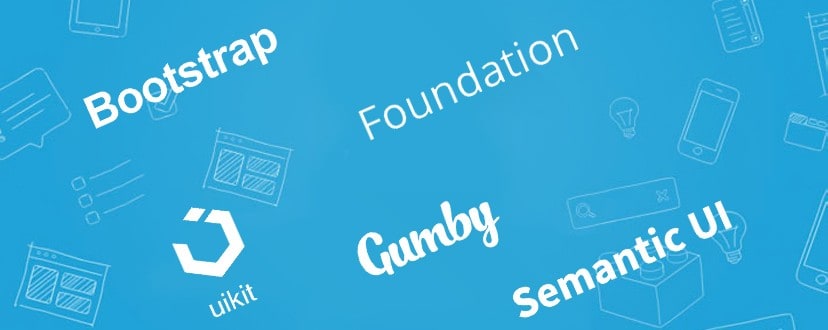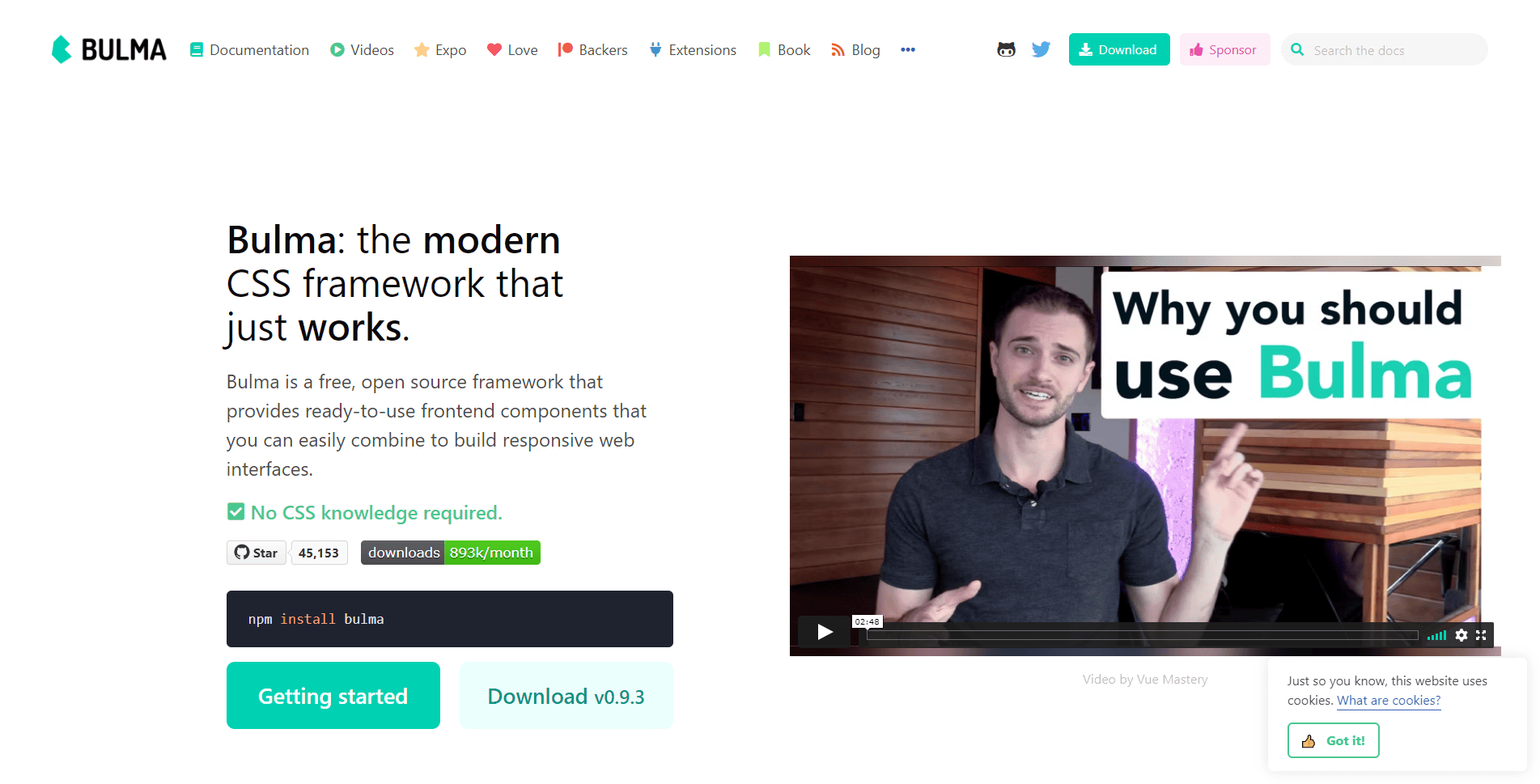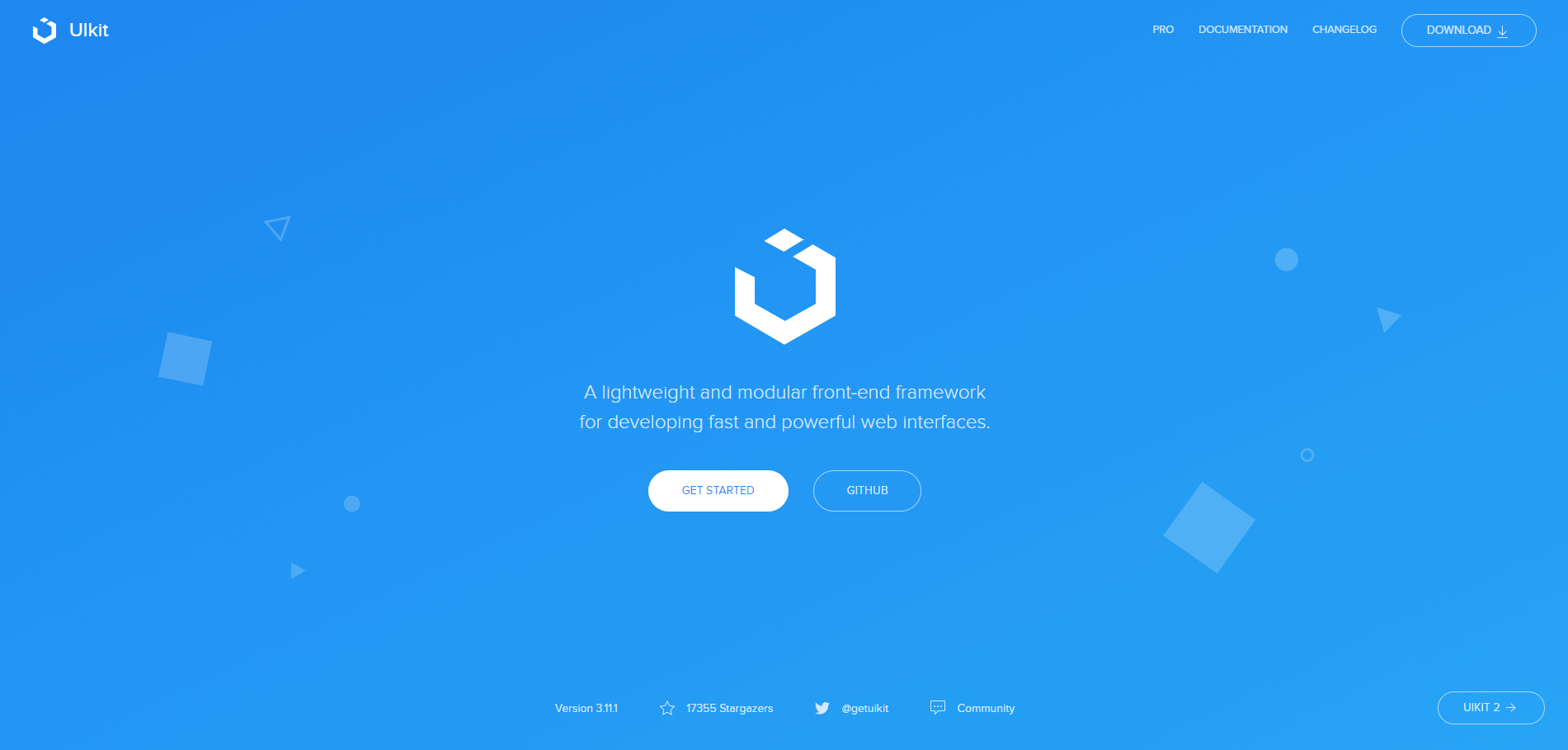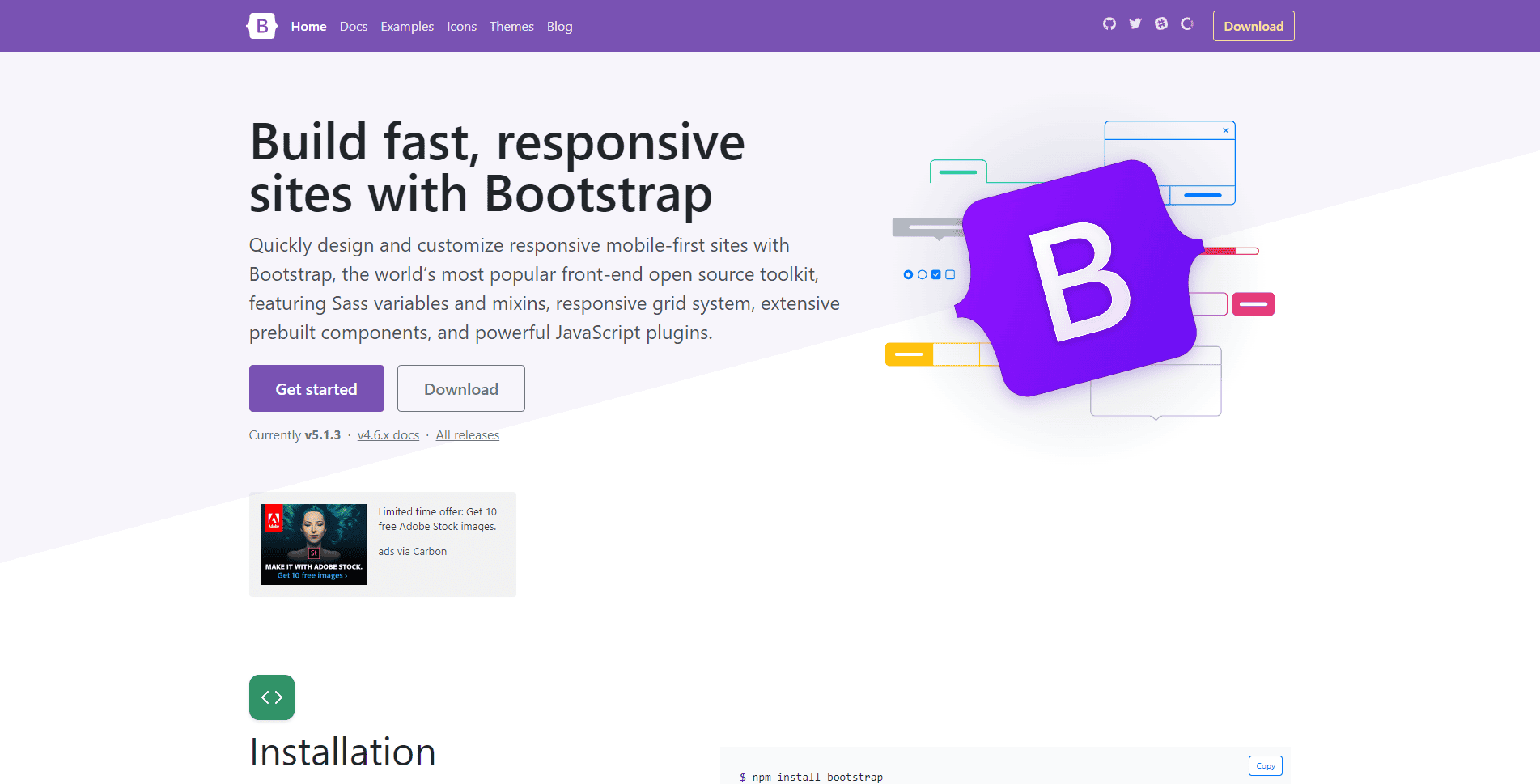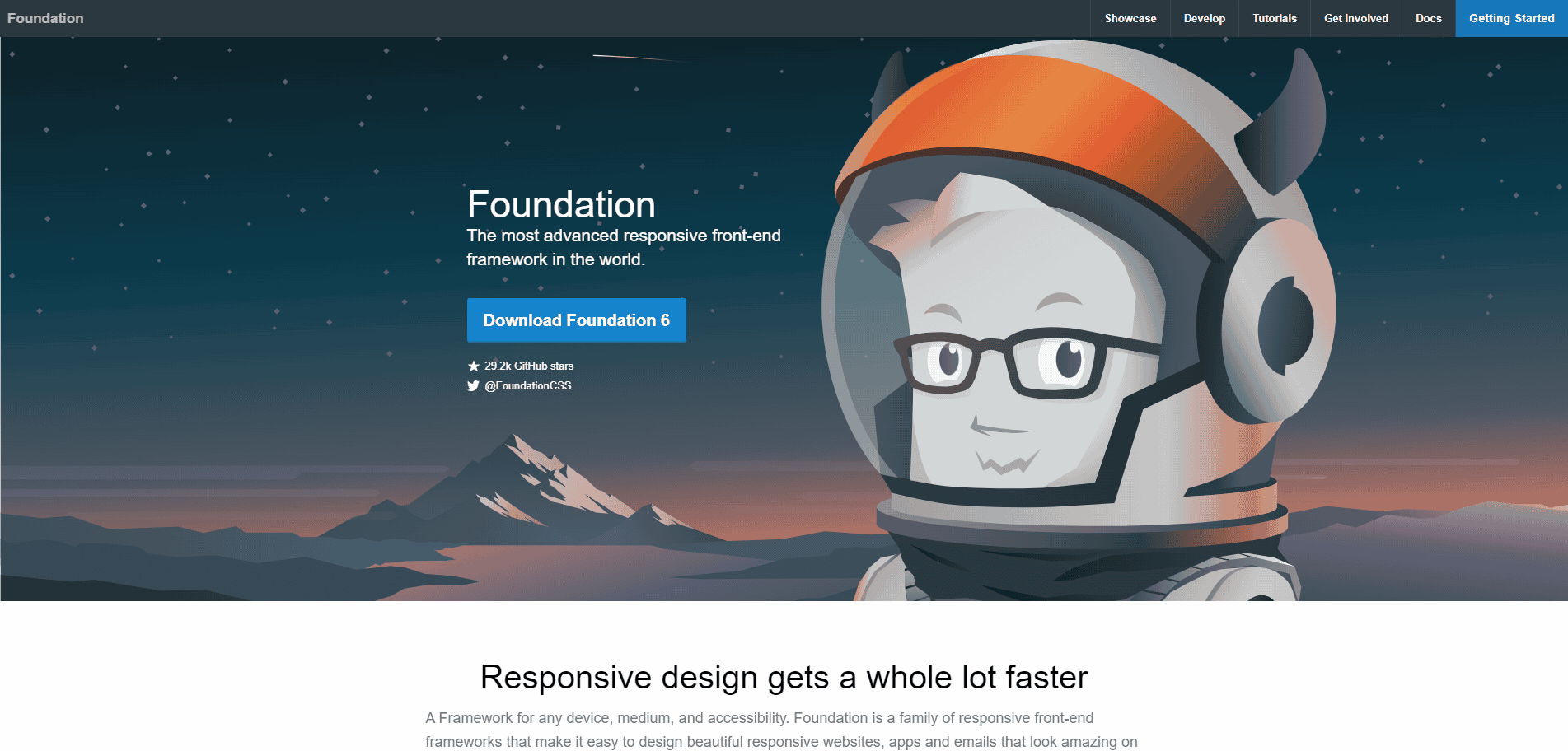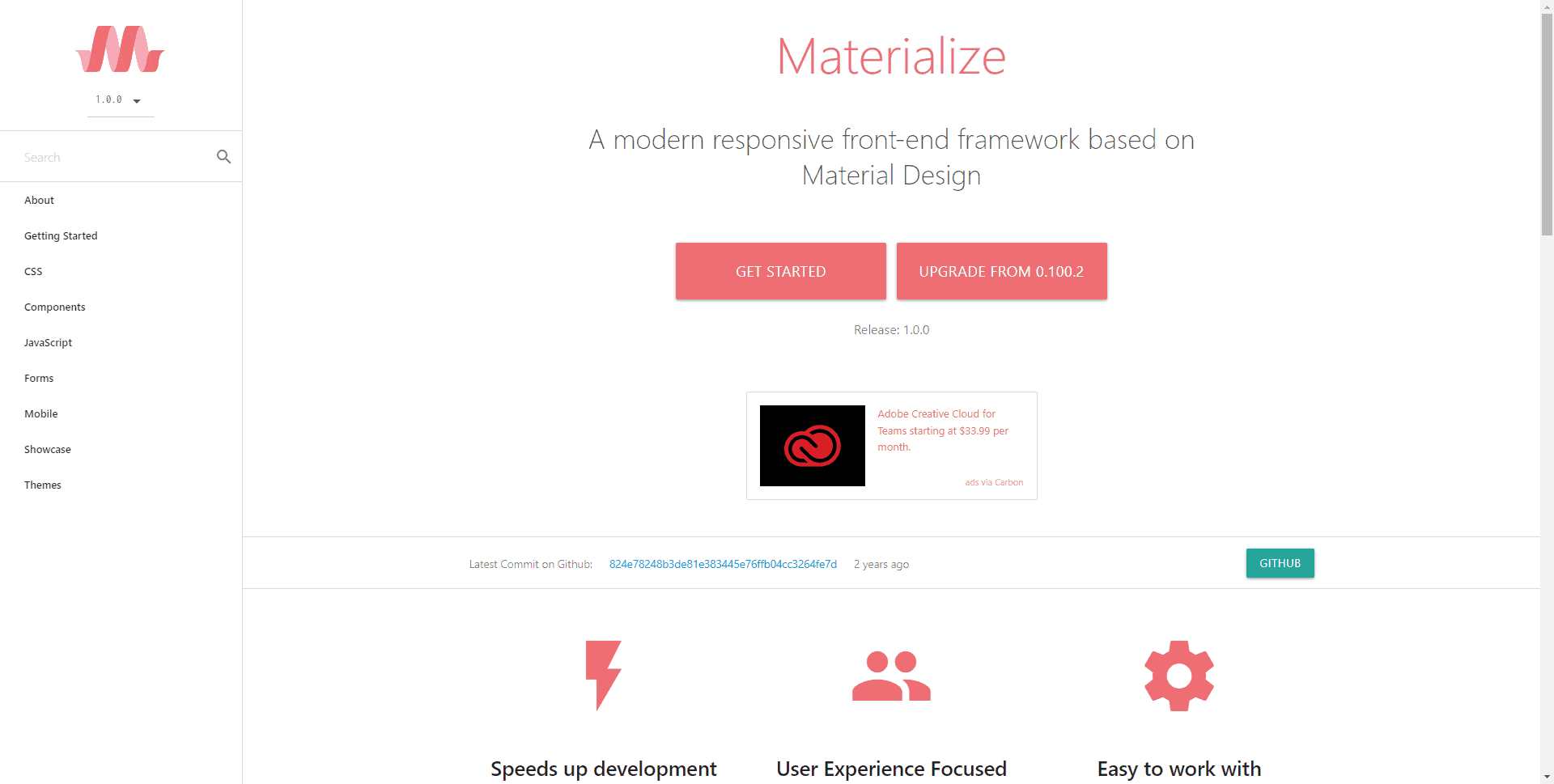Boost your workflow with frontend frameworks. If you consider developing a couple of years ago, you might had to write a hundred lines of code ...
Boost your workflow with frontend frameworks. If you consider developing a couple of years ago, you might had to write a hundred lines of code for CSS to bring up a simple website skeleton. Frameworks helps you to code less and saves your valuable time.
Currently there are a wide array of frameworks are available and new ones are emerging. Among so many choices, choosing the right framework can be tough. You may be drawn to a popular framework but it might no suit your needs.
In this post I am going to introduce you with the most popular options according to your needs. So, that you can choose the right one and complete your work quickly.
Why Do You Need a CSS Framework?
We build programs to lessen our tasks and similarly framework is built so that we code less. The less we write code, more the website is faster and time we can save. There are various reasons, 'Why do you need a CSS framework?'. Some of these are-
- Faster Web Development: If you are a beginner you will require more time to develop than skilled people. In this case, a framework will help the beginner to develop faster as it requires minimal coding skills and comes with many useful widgets. Frameworks not only help non-skilled people but it also helps skilled people. When you use a framework, there is no need to write code from scratch every-time. With a framework your time will be saved and you can do whatever you want in this free time.
- Creative Responsive Design: Your developed site should render properly across all types of devices. Because different people use different devices and if your site doesn't load correctly on a single device, you might lose your valuable traffic. A framework that supports responsive web design will save your time and you will be able to develop without any worry.
- Producing Prototypes: To speed up the design and development process, prototype and wireframes help a lot. You can produce prototypes and wireframes very much faster with a framework.
Best SASS Based CSS Framework in 2022
Let's check out the best SaaS based CSS frameworks of 2022.
Bulma is one of the free open source CSS framework that is based on Flexbox. Now it has become widely popular and more than 150000 developers are using this framework without any worries. This framework is meant to include only the minimum requirements to get you started on your web development project.
This lightweight framework is absolutely responsive and based on a 12 column grid system. If you are a newbie then you can learn very easier and faster with Bulma. In case of problems, a huge community is available for this framework.
Once you know how to use Bulma, you can quickly customize your website. This framework has 33.3K stars on github repo and updated very frequently.
Pros:
- Very quick to customize.
- It integrates in any JS environment.
Cons:
- CSS only - doesn't include any JS or jQuery plugins.
This framework is great for beginners and developers who wants to create responsive websites.
UIKIT is a very lightweight and highly modular front-end framework that helps to develop powerful and fast web interfaces. This mighty fact that includes in this framework is, it includes both Sass and LESS CSS preprocessors.
UIKit has become one of the most popular front-end frameworks out there with an array of nimble responsive components with consistent naming conventions. This framework comes with more than 30+ extendable, modular components which can be combined for even more versatility.
It includes elements like HTML forms and tables; navigation components like side navigation bars; JavaScript components like modal dialogs and off-canvas bars; common elements like badges, buttons, and overlays; and layout components with an entirely responsive grid system.
Currently, UIKIT has 14k stars in github repository and updated regularly.
Pros:
- Outstandingly modular, so that you can add components to the stylesheet without negatively impacting your overall style.
- Highly customizable.
- Create advanced user interfaces with components like nestables.
Cons:
- The number of resources is very low due to relative newness.
This framework is ideal for fairly experienced developers due to lack of resources. Otherwise, it is great for complex and simple projects.
This list would be incomplete without the most popular, faster and user-friendly framework, Bootstrap. This framework is released in 2011 and created by Twitter developers. Currently, there are millions of amazing websites across the web that are running this amazing framework. You can check its popularity by counting its stars at GitHub repo, its more than 131K.
Like the all other effective front-end frameworks, Bootstrap includes HTML, CSS, and JavaScript. You can easily develop responsive sites of all sizes and complexities. As this framework is updated regularly, it always includes the best and latest features.
Quickly build your entire app or prototype your ideas with Bootstraps Sass variables and mixins. Earlier it was based on LESS but as the popularity is increasing to SASS, Bootstrap made its version 4 in SASS. Our classic version of Quix Joomla page builder is built with Bootstrap version 3, which is based on LESS.
Pros:
- Extensive documentation.
- Responsive web design support, which can also be disabled if required.
Cons:
- An immoderate number of DOM elements and HTML classes can be confusing and messy.
- Out of the box file size of 276kB due to an excessive number of rarely used styles.
This framework is ideal for beginners and those persons who prefer a robust front-end framework.
Foundation framework is one of the highly advanced frameworks that has been created by a web design company called Zurb. It is an enterprise grade front end framework that is ideal for developing a responsive website, nimbles. Many popular organizations like FaceBook, eBay, Mozilla, Adobe, hp, Cisco, Disney, and other popular organizations use this framework on their sites.
If you are a newbie than definitely, this is not the framework you are looking for. It is fairly complex and not suitable for persons who are unknown with frameworks. If you have earlier experience, you can easily design beautiful apps, emails, and websites that will look mindblowing on any device. Foundation is readable, flexible, semantic and entirely customizable.
Foundation comes with GPU acceleration for lightning fast and smooth animations. It offers Fastclick.js for fast rendering at mobile devices. This versatile framework runs on Sass preprocessor and includes data interchange attribute that is developed by Foundation.
This attribute lets you load heavier HTML sections for larger screens and lightweight HTML sections for mobile screens. Currently, this framework has more than 28K stars in the GitHub repository with a big user community.
Pros:
- Great flexibility as no style lock-in.
- Instead of pixels uses REMS, eliminates the need of explicitly state height, width and other attributes for each device.
Cons:
- Size is fairly big out of the box.
- A bit of complex for the beginners.
This framework is for those developers who have earlier developing experience and concerns with developing responsive, fast, attractive websites.
Materialize is a responsive, modern front-end development framework that is based on Google's material design specifications. This framework comes with ready to use icons, buttons, forms, cards, and other components. It is offered in both standard version and one that runs on SASS, use any that you like.
The convenient IZ column grid feature is included with Materialize so that it can be used for website layouts. This framework is loaded with CSS, which is ready to use out of the box for material design colors, shadows, typography, and other features.
Additional features of this framework include drag out mobile menus, SASS mixins, ripple effect animation and more. This framework is rated with 35K+ stars on the GitHub repository.
Pros:
- A huge number of components.
- Support for all types of devices.
Cons:
- Very large size.
- No flexbox model support.
This framework is ideal for less experienced developers, who require the guidance of Google's material design specification.
Best LESS based CSS Framework in 2022
UIKIT
UIKIT is a very lightweight and highly modular front-end framework that helps to develop powerful and fast web interfaces. The mighty fact that includes in this framework is, it includes both Sass and LESS CSS preprocessors.
UIKit has become one of the most popular front-end frameworks out there with an array of nimble responsive components with consistent naming conventions. This framework comes with more than 30+ extendable, modular components which can be combined for even more versatility.
It includes elements like HTML forms and tables; navigation components like side navigation bars; JavaScript components like modal dialogs and off-canvas bars; common elements like badges, buttons, and overlays; and layout components with an entirely responsive grid system.
Pros:
- Outstandingly modular, so that you can add components to the stylesheet without negatively impacting your overall style.
- Highly customizable.
- Create advanced user interfaces with components like nestables.
Cons:
- The number of resources is very low due to relative newness.
This framework is ideal for fairly experienced developers due to lack of resources. Otherwise, it is great for complex and simple projects.
Semantic UI
Semantic UI is one of the relative newcomer but stands out in a number of ways. It has become one of the very popular front-end frameworks because of its simplicity. Its code itself is self-explanatory as it uses natural language.
The performance logging of semantic lets you track down the bottlenecks of your code, without digging through stack traces. With Semantic an intuitive inheritance system comes equipped with a high-level theming variable that let you have full design freedom.
Semantic UI is integrated with a good number of third-party libraries. In fact you probably won't need to use any other libraries and therefore the whole web design process is a bit easier.
Pros:
- Very much beginner-friendly.
- Minimal loading time, small file size.
- Customization made easy with versatile elements.
Cons:
- Very large packages when compared to Bootstrap and Foundation.
- Complex design and development might lack in this framework.
This framework is ideal for those who want a lightweight and beginner friendly environment.
Special Mentions:
In recent times CSS frameworks are evolving continuously and new ones are rising. Upon reviewing the list, we feel that a few frameworks deserves a mention at here. These are:
- Tailwind CSS
- Ionic
- Kube
SASS vs LESS Framework
Your time might be consumed a lot by small repetitive tasks like closing tags, look up hex color values, etc. And at here CSS preprocessor comes into play. It is a scripting language that extends the CSS and then compiles it back into regular CSS.
There are two primary CSS preprocessors on the market today named Sass and LESS. SASS got much more popular then LESS, though both are very powerful CSS extensions. Both are backward compatible so you can your existing CSS file easily by renaming .css file extension to .scss or .less. Sass is Ruby based and LESS is JavaScript based. Therefore NodeJS is required to run LESS, and Ruby is required to run Sass.
LESS, Sass both has its pros and cons. Like if you talk for language ability (logic/loops) - Sass will be your winner, for website niceitude - LESS will be your winner, for @extend concept - Sass will be your winner, for working with media queries - Sass will be your winner and in many cases both will be a winner.
Which CSS Framework is Best For You?
All the frameworks that are mentioned at here are best. But if you ask me which one to choose, I will tell you to choose a framework according to your skill and knowledge. If you are a beginner, choose Bootstrap as it got the largest community and very easy to use.
If you are already using bootstrap or have skills then I will recommend UIKIT. UIKIT will give you advanced functionalities which will require your earlier knowledge.
Conclusion
You can see different CSS frameworks bring different benefits. Therefore select a CSS Framework considering your skill level and the requirements of the project you are doing. Let us know your thoughts with comments in the box below.

